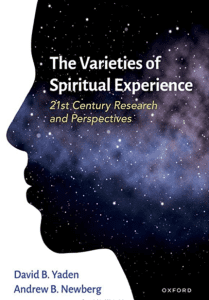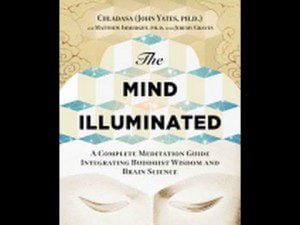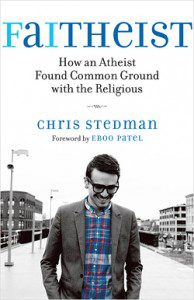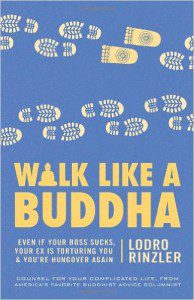“I am large, I contain multitudes.” (Walt Whitman)
“Start a huge, foolish project, like Noah.” (Rumi)
—Epigraphs to Eboo Patel’s Acts of Faith: The Story of an American Muslim,
the Struggle for the Soul of a Generation
M. Scott Peck in his bestselling book The Road Less Traveled writes that one “somewhat oversimplified” definition of sanity is the ability to be in touch with and to cope with reality. Conversely, one definition of insanity is being out of touch with or being unable to cope with reality. He also adds the important caveat that, “it is possible for individuals to be so much more in touch with reality than their fellow citizens that they will be deemed ‘insane’ by a ‘sick society.’”
For the purposes of this post, the aspect of reality that I would like to focus on being in touch with and coping with in a healthy way is pluralism, Walt Whitman’s “multitudes.” The overall title of this blog is “Pluralism, Pragmatism, Pluralism,” and the first word of that title — pluralism — is the most vital factor that started my journey to Unitarian Universalism.
Growing up as a Southern Baptist in the midlands of South Carolina, there was a time when it would have seemed like a good idea to me if all six billion people on Earth were Southern Baptists. But as I grew older, I began to meet increasing numbers of non-Southern Baptists who were kind, well-adjusted, smart, funny, competent, healthy — dare I say it! — sane human beings, in touch with reality. My childhood church taught me that Jesus, as defined by the Southern Baptist Convention, was the one, true center of “life, the universe, and everything.” But when your roommate is a Roman Catholic, your best friend is an atheist, and your favorite professor is a Buddhist, it is increasingly difficult to maintain with integrity the position that the Southern Baptist faith — or any other single perspective — is the one, true center.
The contrasting view of pluralism is that the universe, upon even the most cursory examination, is a blooming, buzzing, dazzling feast of diversity. And as we seek to navigate this pluralism in a way that is healthy and sane for all concerned, I would invite you to consider your tour guide — at least for the length of this post — to be Eboo Patel. Eboo is the founder and president of the Interfaith Youth Core, a Chicago-based nonprofit dedicated to building the interfaith youth movement. He is also a Rhodes Scholar, a Muslim, an Indian-American, and he was the 2013 Ware Lecturer at last month’s Unitarian Universalist General Assembly.
Each year the Ware Lecture is a highlight of the UU General Assembly. The inaugural Ware Lecture was in 1922, and past Ware Lecturers include Reinhold Niebuhr, Howard Thurman, Martin Luther King, Jr., Saul Alinsky, Kurt Vonnegut, Elaine Pagels, Mary Oliver, and Karen Armstrong as well as many other luminaries. If you are interested, you can read most of the archived transcripts online. And Eboo Patel was asked to join this illustrious group to help further encourage and spread the word about his ongoing contributions to the interfaith movement.
The Interfaith Youth Corp (IYC) describes its goal as what could be called a “healthy” pluralism — one that is in touch with and that seeks to be in right relationship with the reality of the world’s diversity. IYC defines “healthy” pluralism as:
- Respect for people’s diverse religious and non-religious identities,
- Mutually inspiring relationships between people of different backgrounds, and
- Common action for the common good.
As was said by Dr. King, who preceded Eboo Patel’s Ware lecture by almost 50 years:
We have inherited a large house, a great world house in which we have to live together — black and white, Easterner and Westerner, Gentile and Jew, Catholic and Protestant, [Muslim] and Hindu — a family unduly separated in ideas, culture and interest, who, because we can never again live apart, must learn somehow to live with each other in peace….. The large house in which we live demands that we transform this world-wide neighborhood into a world-wide [family]. Together we must learn to live as brother [and sister] or together we will be forced to perish as fools….
And Eboo’s particular path toward that goal of healthy pluralism is bringing together young adults of all faiths and of no faith to build relationships through social justice work. As we UUs like to say, “You don’t have to think alike to love alike.”
But choosing to “love alike” in the spirit of Interfaith cooperation even when we don’t always “think alike” regarding our individual or group beliefs is not the only response to pluralism. Eboo likes to say that religion can manifest itself in many different ways. The same religion, in different hands, can be a “bubble,” “barrier,” “bomb,” or “bridge.” The difference, Eboo says, is the Martin Luther King path versus the Al-Qaeda path.
The most striking example I’ve seen of this phenomenon recently is a headline last month in The New York Times that said, “Extremism Rises Among Myanmar Buddhists.” I’ll repeat that: “Extremism Rises Among Buddhists.” Most of us usually think of Buddhists as serene, peaceful, compassion-filled, mindful meditators. But Buddhism has violent, fundamentalist sects too. The following is a brief excerpt from the article:
After a ritual prayer atoning for past sins, Ashin Wirathu, a Buddhist monk with a rock-star following in Myanmar, sat before an overflowing crowd of thousands of devotees and launched into a rant against what he called “the enemy” — the country’s Muslim minority. “You can be full of kindness and love, but you cannot sleep next to a mad dog….”
[O]ver the past year, images of rampaging Burmese Buddhists carrying swords and the vituperative sermons of monks like Ashin Wirathu have underlined the rise of extreme Buddhism in Myanmar…. Buddhist lynch mobs have killed more than 200 Muslims and forced more than 150,000 people, mostly Muslims, from their homes….
Wirathu, the spiritual leader of the radical movement, skates a thin line between free speech and incitement…. In his recent sermon, he described the reported massacre of schoolchildren and other Muslim inhabitants in the central city of Meiktila in March, documented by a human rights group, as a show of strength. “If we are weak,” he said, “our land will become Muslim.”
Buddhism would seem to have a secure place in Myanmar. Nine in 10 people are Buddhist, as are nearly all the top leaders in the business world, the government, the military and the police…. But Ashin Wirathu, who describes himself as a nationalist, says Buddhism is under siege by Muslims who are having more children than Buddhists and buying up Buddhist-owned land. In part, he is tapping into historical grievances that date from British colonial days when Indians, many of them Muslims, were brought into the country as civil servants and soldiers.
But if you know almost anything about Siddhartha Gautama’s, the historical Buddha’s, original intention of helping all beings eliminate their suffering through insights into the nature of reality, then you know this violent, fundamentalist sect of Buddhism, is perverting the heart of Buddhism. It is seeking to avoid interfaith cooperation by scapegoating the “other” and seeking to eliminate those viewed as “different.” It the religion not of the bridge, but of the bomb. (Notice, of course, that today in Myanmar it is Muslims who are the victims of a violent, fundamentalist strain of another religion.)
If you are familiar with the history of Christianity, you can trace a similar dynamic of how Jesus’ teachings have been perverted. Looking at these historical trends, the author Brian McLaren has argued that the problem isn’t any form of religion per se; rather, the problem is unhealthy, small-minded, and tribalistic forms of any religion. He writes:
There are two kinds of . . . every . . . religion and non-religion too: one of social control and one of social transformation; one to hold people down, one to lift them up; one an opiate to pacify people into compliance, the other a stimulant to empower people to imagine a better world, a better future, a better life — giving them the courage to live in peaceful defiance of violent, corrupt, and greedy powers-that-be.
And when I look at history, I see individuals and groups who feel inspired by religious traditions to care for the poor and others who feel inspired by the same religious traditions to bomb abortion clinics. The difference, as far as I can see, is the interpretive lens that the various individuals and groups bring to the tradition, which to me puts the responsibility more on the individual and groups with the poisonous, self-interested interpretation than with the tradition or text itself.
Some pundits try to claim that Islam is an exception to this rule; that it is inherently a religion of violence, but I remain unconvinced, as does every responsible religion scholar I have read on the subject. A lot would obviously need to be said to address the 1,400 year-old history of Islam in all its complexity. But for now, let me start with just the first line of the first surah (or chapter) of the Qur’an, which says, “In the name of God, the Gracious, the Compassionate.” That’s not a bad beginning: grace, compassion.
Admittedly, there are some questionable, difficult, ugly parts of the Qur’an, just as there are in the Bible, the Hindu scriptures, and in the history of science — as well as frankly in the history of any arena in which imperfect human beings are involved. So to me, the lesson to take away is that any tradition, religious or secular, can be a source of bubbles, barriers, bombs, or of bridges to cooperation. The choice is ours. The difference is the intention and motivation that we bring to our sacred texts and traditions — what parts we choose to lift-up and what parts we choosing to denounce as obsolete.
Of course, all that is easier said than done, especially when competing with the entrenched prejudices and power-players in various religious traditions. Indeed, one of the most memorable lines of Eboo Patel’s Ware Lecture last month was that, “If you choose the path of interfaith leadership, you are going to get punched.” (That punch may be metaphorical or literal.) As one of his editors once told him, “You’re leading with your chin on the most divisive issue of our time.”
To know that the path is dangerous of choosing pluralism over prejudice and bridges over barriers, you only have to think back to all the nonsense, hyperbolic rhetoric, and vitriol surrounding such issues as the Qur’an burnings in Florida, the Muhammad cartoons in Denmark, and the so-called “Ground Zero Mosque,” which is essentially just the Islamic equivalent of a “Jewish Community Center” or what a YMCA used to be back when it stood for “Young Men’s Christian Association.” And one of the stated goals of this “Islamic Community Center,” now called Park51 is intended to be a center for interfaith dialogue and to promote moderate Islam, which we need more of, not less.
As Michael Bloomberg, the Jewish mayor of New York said:
Islam did not attack the World Trade Center — Al-Qaeda did…. Let us not forget that Muslims were among those murdered on 9/11 and that our Muslim neighbors grieved with us as New Yorkers and as Americans…. We would betray our values — and who we are as New Yorkers and Americans — if we said ‘no’ to a mosque in Lower Manhattan.
That speech understandably made headlines, but Eboo Patel shares the lesser known backstory to Mayor Bloomberg’s motivation to speak out so courageously and at political risk for pluralism and against the prejudice of Islamophobia:
It turns out that Michael Bloomberg, one of the richest people in America, a man who had won an unprecedented third term in one of the most visible and influential positions in American politics…had a childhood memory of prejudice that still stung. He remembered a time when his family, because they were Jewish, could not purchase a home outright in the Boston suburb of Medford. They had to ask their lawyer — a Christian — to buy it and sell it back to them…. Some people experience bigotry and respond, “I’m going to help build a world where that never happens to my people again.” Michael Bloomberg experienced it and decided, I’m going to help build a world where that never happens to anyone again.”
But unlike Mayor Bloomberg, too few people have come to see that Islamophobia is equally as repugnant as Antisemitism.
And this point is not minor. There are approximately 1.5 billion Muslims in the world. As a point of comparison, there are approximately 2.1 billion Christians, and only 800,000 Unitarian Universalists. To again quote Dr. King, “we must learn to live as brother [and sister] or together we will be forced to perish as fools….”
Significantly, Eboo Patel ended his Ware Lecture by quoting the vision of Dr. Martin Luther King, who though he faced tremendous prejudice, violence, and threats said that he did not seek revenge. Instead, Dr. King taught that our means — our path of reaching our goal — must be commensurate with the goal itself, and, he said, ‘the end is reconciliation, the end is redemption, the end is the creation of the beloved community.’ I take that to mean then that all along the way, we must seek reconciliation with one another. And if the end is the creation of beloved community, then we must seek to build bridges across divides of race, gender, and class not just in the end, but at every point along the way.
Notes
1 Peck, The Road Less Traveled, 289-290.
2 My first sermon at UUCF was published online as “Decentering Jesus: My Journey to Unitarian Universalism,” (July 23, 2012), available at http://www.patheos.com/blogs/carlgregg/2012/07/my-journey-to-unitarian-universalism.
3 “The World House” is a chapter of Martin Luther King, Jr.’s 1967 book Where Do We Go From Here: Chaos or Community.
4 “You don’t have to think alike to love alike.” — This quote was not, as often claimed, said originally by a Unitarian Universalist, but instead originates from John Wesley, the founder of the Methodist movement. For more, see “Francis Dávid didn’t say, ‘We need not think alike to love alike.’ Does it matter?” available at http://www.uuworld.org/ideas/articles/229844.shtml.
5 “the Martin Luther King path versus the Al-Qaeda path” — Eboo Patel, “The Pluralist Next Door,” available at http://www.huffingtonpost.com/eboo-patel/the-pluralist-next-door_b_469306.html.
6 “Extremism Rises Among Myanmar Buddhists,” available at http://www.nytimes.com/2013/06/21/world/asia/extremism-rises-among-myanmar-buddhists-wary-of-muslim-minority.html?pagewanted=all.
7 Brian McLaren, “Iran … two kinds of Islam, and two kinds of religion in general,” available at http://www.brianmclaren.net/archives/blog/iran-two-kinds-of-islam-and-two.html.
8 “Islam did not attack the World Trade Center — quoted in Eboo Patel, Sacred Ground: Pluralism, Prejudice, and the Promise of America, 10.
The Rev. Dr. Carl Gregg is a trained spiritual director, a D.Min. graduate of San Francisco Theological Seminary, and the minister of the Unitarian Universalist Congregation of Frederick, Maryland. Follow him on Facebook (facebook.com/carlgregg) and Twitter (@carlgregg).
Learn more about Unitarian Universalism:
http://www.uua.org/beliefs/principles












